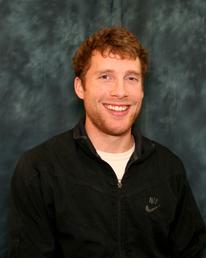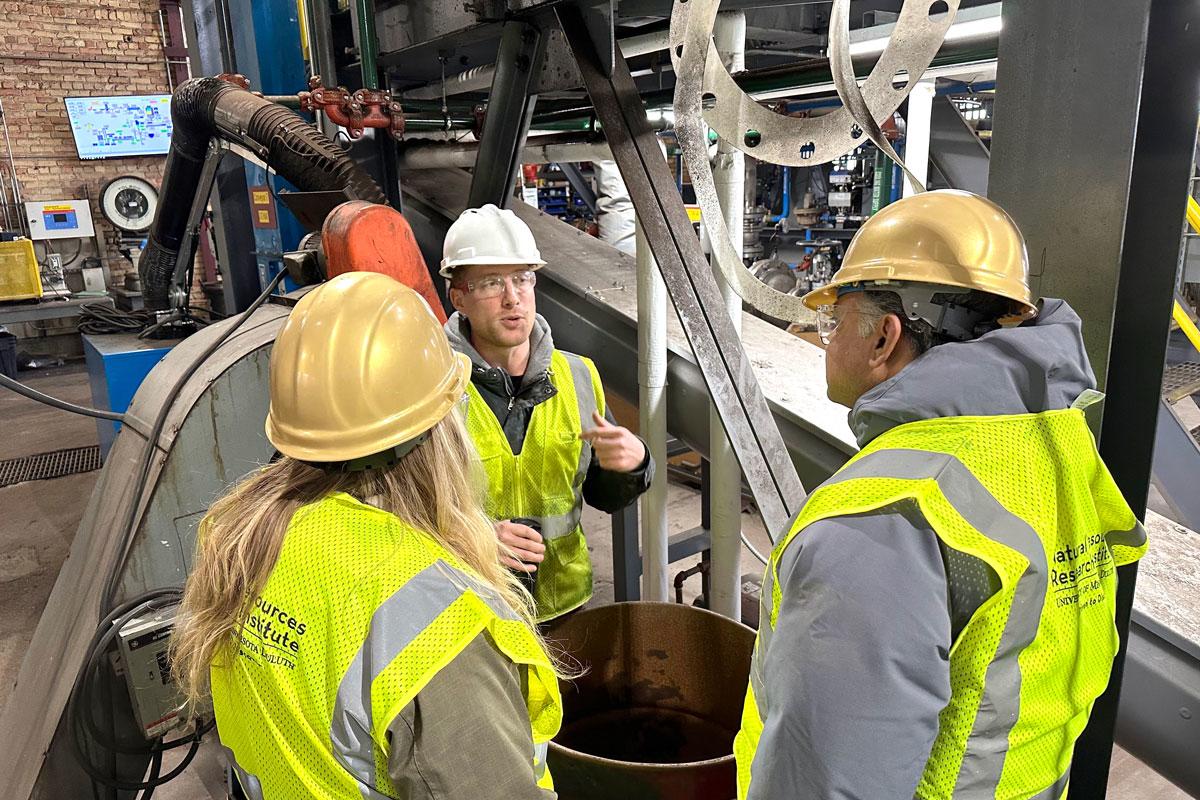Photo: Matt Young (center) discusses engineered biocarbon materials with UMN Vice President for Research Shashank Priya (right) and Amy Kircher (left), Associate Vice President for Research. Photo by Jeremy Weizel.
Spending your days crawling around the underbelly of a bridge might not be for everyone. But for Matt Young, it launched a research career in ways he never would have expected.
Now in his 10th year working at NRRI, Young’s civil engineering degree from the University of Minnesota Duluth (’13) landed him in the emerging field of biomass conversion for new materials and bio-based energy products.
Intern Experience
And the bridge research was the perfect, well…. bridge, from college coursework to real-world application. He was hired at NRRI as an intern for a collaborative project with the U.S. Forest Service to better understand the structural integrity of Minnesota’s 4,000 wooden bridges.
“The goal was to correlate the decay rate of timber bridges to the type of bridge system,” Young explained. “It involved a lot of crawling around pilings with various types of non-destructive equipment to find decay spots.”
He enjoyed learning about real bridge systems, various test equipment, and developing valuable data management skills. That project led to helping on many other research projects in the wood materials arena and finally to a permanent staff position working on biomass research.
Beautiful Biochar

When NRRI began developing various renewable materials from biomass, Young settled in and is now NRRI’s biomass conversion specialist.
“In my time at NRRI, we’ve gone through a few biochar ‘eras’,” he said. “We experimented with replacing fossil coal with biochar at power plants and have recently pivoted to using biochar in agricultural and water treatment applications.”
Now he’s helping to develop biochar as a substitute for fossil carbon in metallurgical processes, working at both the lab scale and NRRI’s much larger pilot facility in Coleraine. And it’s the scaling up of the research that he finds especially enjoyable.
“Anyone can make beaker-size products, but making barrel quantities, that’s a challenge,” said Young. “One of our clients did field trials with material we provided, and now they are going commercial.”
He’s looking forward to doing a pilot trial of biocarbon at a commercial electric arc furnace steelmaking plant in the next couple of years.
“That’s really exciting because, if it’s successful, we will have helped the steel industry become more environmentally sustainable,” Young added.
Imaginative Engineering
One of Young’s early NRRI mentors instilled an incredibly creative research approach that sticks with him still. He used the term “imagineering” which is trademarked by the Disney Company. Young finds it especially useful when his team implements a new technology or technique with no handbook to guide them. It happens often for his team.
“When we operate the pilot biomass conversion kiln, there are more process variables to control to make sure the material is the same quality as what was produced at the lab scale, and it’s easy for things to go sideways,” said Young. “Imagineering is creative problem solving, try and fail, move forward, get dirty, keep adapting and don’t get fixated on one path forward.”
To students ready to transition to the work world, his advice is simple: try jobs that are outside of your field of study, embrace new challenges, and fail fast, then move on.
“I’ve drifted a long way from the path of a civil engineer, but have enjoyed the new challenges along the way,” he said.
